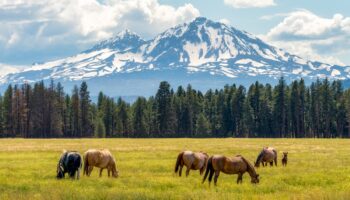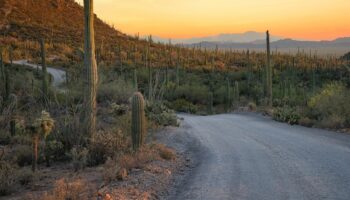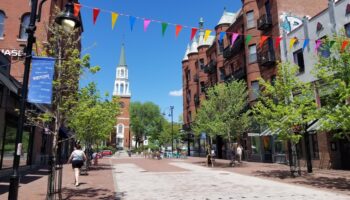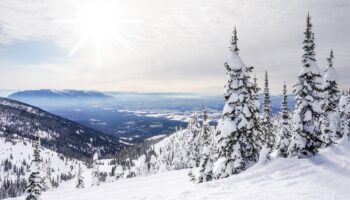The USA is known for many things; Cowboys, big skies, and cultural diversity spring to mind. But did you know that the country is also the fourth-largest wine producer in the world? It sits right up there with Italy, France, and Spain.
Wine-making dates back to the 1500s, but it wasn’t until the 18th century that local wines made it onto the international scene. The country’s wine regions (or AVAs – American Viticultural Areas) are scattered across diverse climates, from sunny coastlines to high-altitude hillsides. Most are in sunny yet temperate regions like California, Oregon, and Washington.
These are the best wine-producing regions in the country:
10. Loudoun, Virginia

Loudoun, Virginia, is only a quick hour’s drive from Washington, D.C. It’s an unassuming wine region boasting nearly fifty wineries without being too overly touristy. The first wine was bottled here in 1984, making it relatively new to the scene.
Since then, the region has flourished as a winemaking leader. It’s mainly known for its Viognier, Cabaret Franc, and Petit Verdot grapes, resulting in some bold and balanced wines. It’s one of the few places that successfully replicated Italy’s Piedmont and France’s Bordeaux wines.
As if the rolling vineyards weren’t impressive enough, these wineries have sweeping views of the Blue Ridge Mountains. Take some time to explore Middleburg – a charming colonial-esque town – and pair your wine with a farm-to-table meal.
9. Paso Robles, California

Paso Robles is right in the center of California, about three hours between Los Angeles and San Francisco. It’s not trying to beat Napa or Sonoma, and that’s exactly what makes it so charming.
The area has its own atmosphere and style, often characterized by innovation and a bit of rule-breaking. They call it the land of cowboys and wine, and if that doesn’t tell you what you need to know, I don’t know what will.
The area is huge, with family-owned and big-name brand vineyards stretching across 40 thousand acres. Among the 200 wineries, it’s particularly well known for robust reds like Singandel and Syra.
The town of Paso is the heart of these vineyards, with plenty of restaurants, boutique accommodations, and even a craft cocktail scene. But its laid-back vibe is really what sets it apart.
8. Walla Walla Valley, Washington

Walla Walla Valley is as fun to visit as it is to say out loud. The region is new to the wine scene but has entered with a bang. Located along the Washington-Oregon border, it’s small and intimate, known for producing a few premium wines.
It’s been named America’s Best Wine Region and the Wine Region of the Year by various readers’ choice awards, and its popularity is only growing. There are over 130 wineries here, most producing excellent Cabernet Sauvignons, Merlots, Syrahs, and Malbecs.
While wine is at the forefront, the region is a feast for all the senses. Picture vineyards framed by mountains, wildflowers carpeting the hills in spring, and an artsy downtown with an unpretentious vibe.
7. Texas Hill Country, Texas

The Texas Hill Country is the star of the Lone Star State’s wine scene. It is in an unlikely location that is giving Californian grapes a run for its money. Stretching between Austin and San Antonio, this region is as American as wine regions get. It’s all about big skies, Southern charm, and surprisingly impressive wine.
Tempranillo and Cabernet Sauvignon are the two main varietals produced here. They also grow lesser-known grapes, such as Lenoir and Blanc du Bois.
Fredericksburg, a German-inspired town, is the heart of Texas Hill country. Use it as the base to explore some of the 500 wineries around here, or spend your time shopping, dining, and experiencing German-Texan hospitality at its finest.
6. Sonoma County, California

Napa might be California’s most famous wine region, but Sonoma is just as beautiful as its glitzy neighbor. Sonoma County is about double the size of Napa, located north of the Bay Area. It’s got a more laid-back vibe compared with Napa Valley. It’s one of those spots where good wine, local organic food, and the outdoors are at the center of everything.
You’ll find everything from fruity reds to bold whites to sparkling wines here. Most of the wineries are family-owned and sustainable, giving the region an eco-edge over others. In fact, 99% of wines are certified sustainable.
The landscape is one of the most diverse, stretching from the rugged North Californian coastline through lakes, rolling countryside, and redwood forests.
5. Finger Lakes, New York

The Finger Lakes prove that wine can be cultivated in a cloudy climate. Nestled in upstate New York, this region is famous for its cool-climate wines – most notably its sweet wines and crisp Rieslings that are good enough to pass as German.
While the wine is good, the scenery might even be better. Even with regular cloud cover, the Finger Lakes are home to exquisite narrow glacial lakes, waterfalls, and countryside views as beautiful as your screensaver.
Do yourself a favor and visit during the fall. There are few things better than sipping a good glass of wine as you gaze across some of the state’s best fall foliage.
4. Santa Barbara County, California

Santa Barbara County has recently become one of California’s most exciting wine regions. It’s conveniently located just north of Los Angeles, which makes it a hotspot for international visitors with a palate for Pinot Noir and Chardonnay.
Diversity is key here, with over seventy different grape varietals grown across the landscape. Another diversity fact is that Santa Barbara County has the highest percentage of female winemakers in the country.
It’s one of the most beautiful on the list, with lush rolling vineyards set along the coastline and Santa Ynez Mountains. Its Pacific location means it has cool temperatures, which extend the wine-growing season longer than usual.
3. Columbia Valley, Washington

Columbia Valley is Washington State’s largest wine growing region, responsible for over 99% of the states wines. This is because its located under a rain shadow of the Cascade Mountain range, which makes it a semi-arid desert suitable for growing grapes.
The area stretches for over ten million acres across the hilly countryside, rivers, and valleys for as far as the eye can see. It’s a hotspot for varietals like Cabernet Sauvignon, Chardonnay, Merlot, Riesling, and Syrah.
What sets it apart are the contrasts. One moment, you’re sipping world-class Riesling; the next, you’re hiking around the rushing waterfall at the iconic Palouse Falls State Park.
2. Willamette Valley, Oregon

If any wine region in the U.S. is heavily associated with Pinon Noir, it’s Willamette Valley. It’s just a short hour’s drive from Portland, Oregon, with an appropriately refreshing and down-to-earth vibe that feels like an extension of Portland itself. There are more farm stalls than fine-dining restaurants and more flannel than designer outfits here. You’ll find plenty of family-run wineries with lawn games and wood-fired pizza ovens firing through the day.
And since it is relatively cool around here, Willamette is home to some of the world’s best cool-climate wines. This also means that it is noticeably green whatever time of year you visit.
1. Napa Valley, California

And the top wine region to visit in the U.S. is none other than Napa Valley. It’s a household name worldwide. It’s Napa’s legendary Chardonnay and Cabernets that earned the country its global recognition and wine street-cred.
It’s located just north of San Francisco, making it a top weekend destination for Bay Area residents. Driving through Napa alone is a treat for the senses. Golden hills, perfectly manicured vineyards, and grand chateaus set the perfect scene for fine dining and glamorous wine tasting.
Don’t just stick to the big names. Seek out some of the smaller, family-run, sustainable vineyards for more intimate tastings and insider wine-making stories.













Leave a Reply